Freya goddess symbols, also known as freya symbol or freya goddess runes, is a prominent and enigmatic figure in Norse mythology. She is revered as the goddess of love, beauty, fertility, and magic, embodying the complexities of human emotions and the power of nature. Throughout her mythology, various symbols and runes are associated with freya goddess symbolsl, each carrying deep meaning and insight into her multifaceted character. In this comprehensive exploration, we will delve into the world of freya symbol, deciphering her goddess symbols, exploring the runes that bear her essence, and shedding light on the symbolic representations of this captivating Norse deity.
Freya Goddess Symbols
the story of freya goddess symbols, start with Freya, the Norse goddess of love, beauty, and fertility, is a captivating figure in mythology. Freya Goddess Symbols carry rich meanings that delve deep into the realms of Norse culture and spirituality. From her association with golden-bristled boars and chariots drawn by cats to her coveted necklace, Brísinga men, these symbols encompass love, strength, mysticism, and even the duality of human nature. They tell the story of a goddess who embodies both sensuality and fierceness, a deity who guides matters of the heart, oversees the fertility of the land, and plays a role in the fate of fallen warriors. Freya’s symbols are a testament to her enduring influence and the timeless significance of her mythology in understanding the complexities of human existence.
What Symbolizes Freya?
Freya’s symbols are like whispers in the wind, carrying the essence of her divine presence through the tales of Norse mythology. These symbols evoke a sense of connection to nature, a reminder of the eternal dance between the mortal and the divine. They speak of transformation, sensuality, and the profound magic that courses through the veins of existence. Freya’s symbols are keys to unlock the door to her world, inviting us to explore the depths of her influence in the Norse mythological tapestry. Here are some key symbols that represent Freya:
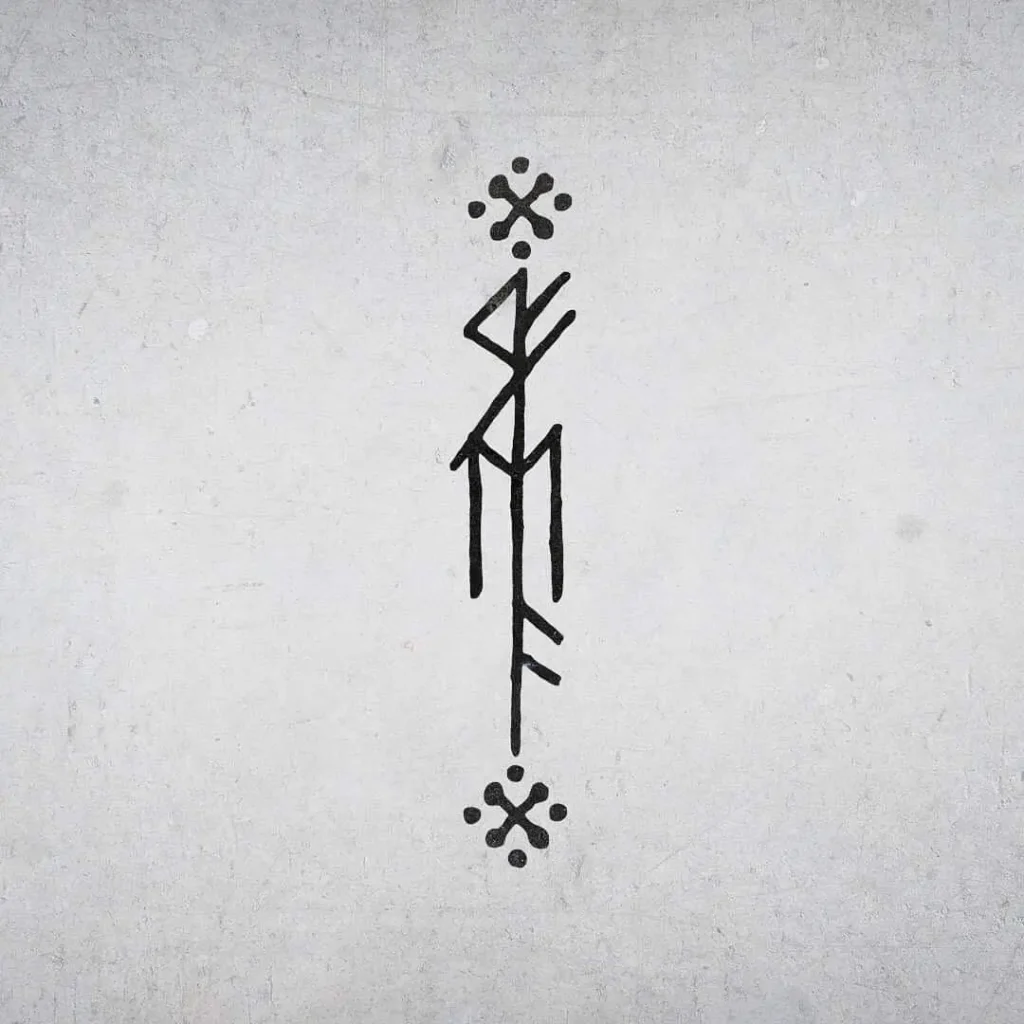

The Cat as a Freya Goddess Symbol
Within the rich tapestry of Norse mythology, the goddess Freya, also known as Freyja, stands as a captivating figure associated with love, beauty, fertility, and magic. Among the many symbols and representations attributed to her, one of the most iconic and enigmatic is the cat. In this exploration, we will delve into the symbolism of the cat in connection with the goddess Freya, unraveling the deep-rooted significance and mystery that surrounds this symbol.
- Independence and Sensuality: The cat symbolizes independence and sensuality, two qualities closely associated with Freya. Cats are known for their self-reliance, and they move gracefully, embodying a sense of autonomy that mirrors the goddess’s own independence. Freya’s sensuality is reflected in the cat’s graceful and alluring demeanor.
- Mysterious Femininity: The cat’s mystique aligns with the mysterious aspects of femininity, a theme that Freya embodies. She is a goddess who understands the depths of human emotion and the enigmatic aspects of life and love. Cats, with their often inscrutable behavior, mirror this aspect of both femininity and the goddess herself.
- Protector of Homes: In Norse culture, cats were often seen as protectors of homes and households, warding off evil spirits. Freya, in her role as a goddess of love and fertility, is also a protector, safeguarding her followers and offering them a sense of security and well-being.
- Associations with the Goddess’s Chariot: Freya is frequently depicted with a chariot drawn by two majestic cats. This image underscores the intimate connection between the goddess and these creatures, emphasizing their role as both companions and symbols of her power and influence.
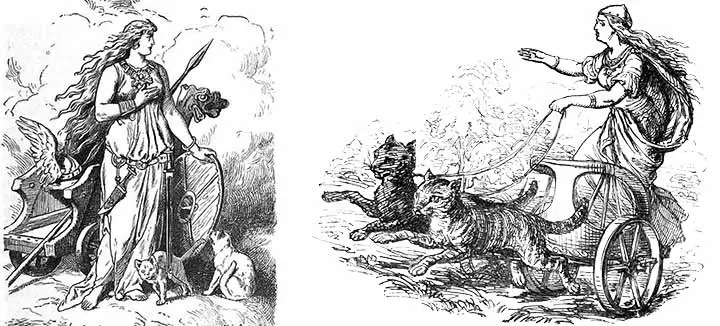

The cat, as a symbol of Freya, encapsulates the essence of this captivating Norse goddess. Its qualities of independence, sensuality, and mysterious femininity mirror Freya’s multifaceted nature. As a protector and symbol of her chariot, the cat reinforces Freya’s role as a guardian and a powerful figure in Norse mythology. This enigmatic feline symbol deepens our understanding of Freya’s character and the enduring fascination she holds in the realm of Norse mythology.
The Majestic Falcon: A Symbol of Freya’s Power
In the intricate tapestry of Norse mythology, Freya, is a multifaceted figure surrounded by a myriad of symbols. Among these symbols, the falcon holds a special place, representing the goddess’s connection to the skies, her mastery of magic, and her divine influence. In this exploration, we will delve into the symbolism of the falcon as a symbol of Freya, unraveling its significance and the deeper meaning it carries within the realm of Norse mythology.
The Falcon as a Freya Goddess Symbol
- Keen Observation and Clairvoyance: The falcon is known for its keen observation and ability to see with exceptional clarity from great heights. This attribute mirrors Freya’s proficiency in magic and divination. She possesses the gift of clairvoyance, allowing her to navigate the complexities of human emotion and destiny.
- Skyward Ascent: Falcons soar high above the earthly realm, reaching for the heavens. This reflects Freya’s divine nature and her connection to celestial forces. As a goddess of love and beauty, she embodies qualities that transcend the mundane, reaching for the sublime.
- Magical Prowess: Falcons are often associated with magic and are believed to possess supernatural abilities. Freya, too, is renowned for her magical prowess, particularly in the practice of seidr, a form of Norse shamanistic magic. The falcon symbolizes her command over mystical forces and her role as a sorceress of great power.
- Messenger of the Divine: In various mythologies, including Norse, falcons are seen as messengers of the divine. They bridge the gap between the mortal world and the realms of the gods. Freya, as a goddess, embodies this connection, acting as a mediator between humans and the divine, particularly in matters of love and desire.
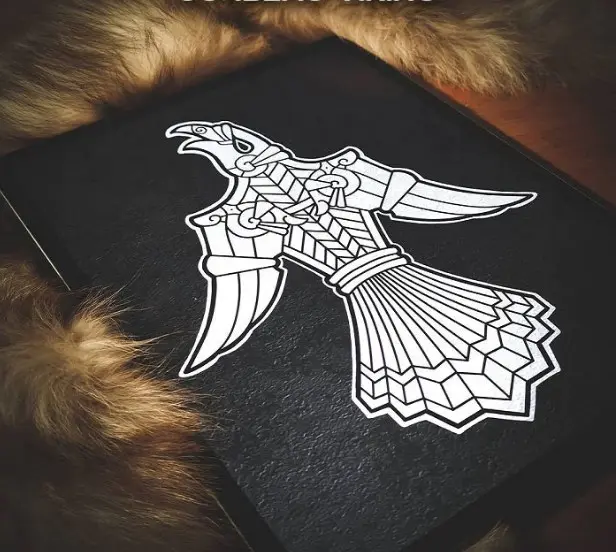

The falcon, as a freya goddess symbols, represents the goddess’s profound connection to the skies, her mastery of magic, and her divine influence in Norse mythology. Its attributes of keen observation, skyward ascent, magical prowess, and messenger of the divine mirror Freya’s multifaceted nature and her pivotal role as a goddess of love, beauty, fertility, and magic. This majestic bird symbolizes the enduring fascination and power associated with Freya, adding depth to our understanding of her character and significance in Norse mythology.
Brisingamen of Freya goddess
Freya, the alluring goddess of love, beauty, fertility, and magic in Norse mythology, is adorned with a plethora of symbols that encapsulate her mystique and power. Among these symbols, the Brísingamen necklace shines as one of the most exquisite and significant. This article will delve into the symbolism of Brísingamen as a part of Freya’s iconography, unraveling the beauty, desire, and sensuality it represents within the realm of Norse mythology.
The Brísingamen Necklace as a Freya Goddess Symbol
- Beauty and Desire: Brísingamen is often associated with Freya’s unparalleled beauty and her passionate desires. Crafted by the dwarven brothers Brising, this ornate necklace is an embodiment of her captivating allure. It symbolizes the goddess’s magnetic charm and her ability to kindle desire and love.
- Wealth and Prosperity: In Norse culture, jewelry was considered a sign of wealth and prosperity. Freya’s possession of the Brísingamen necklace signifies her status as a powerful and wealthy deity. As the goddess of fertility, she is intimately linked to the abundance of life.
- Connection to the Dwarves: The fact that the necklace was created by the Brising brothers, dwarves known for their craftsmanship, underscores Freya’s association with magical and mystical realms. Dwarves, in Norse mythology, are often linked to hidden knowledge and craftsmanship.
- Ownership and Identity: The Brísingamen necklace is not just a symbol of beauty but also an integral part of Freya’s identity. In one famous myth, she trades her favor for the necklace, emphasizing its significance in her life and mythology.
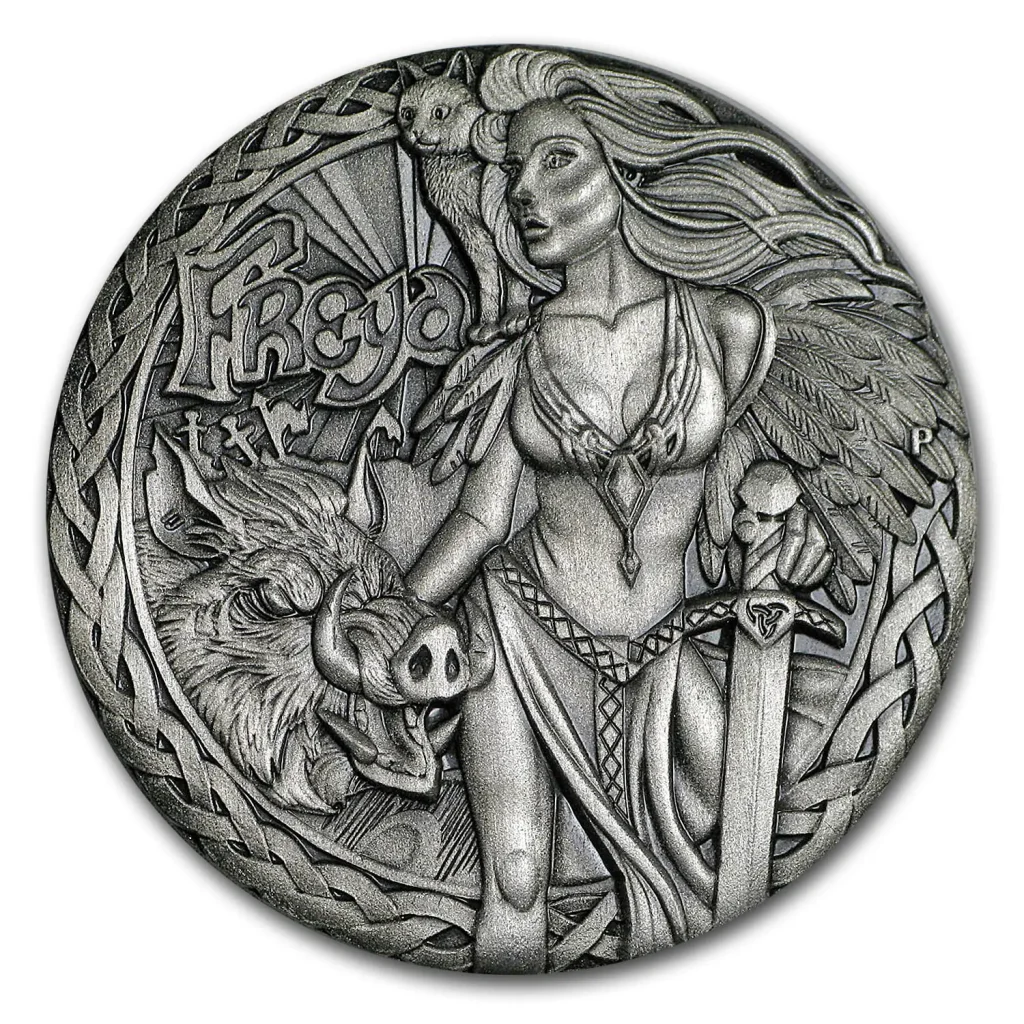

The Brísingamen necklace, as a freya goddess symbols, is a testament to the goddess’s extraordinary beauty, desire, and wealth. Crafted by skilled dwarves, it represents her connection to the mystical and magical realms. This exquisite ornament is not only an adornment but also a profound symbol of Freya’s identity and her role as a goddess of love, beauty, fertility, and magic. Its enduring allure continues to enchant those who seek to understand the complexities of Freya’s character within the tapestry of Norse mythology.
Freya Symbol Golden Apple
In the enchanting realm of Norse mythology, Freya, is surrounded by a constellation of symbols that capture the essence of her captivating character. Among these symbols, the Golden Apples shimmer with an otherworldly radiance, signifying the goddess’s enduring connection to fertility, love, and rejuvenation. In this exploration, we will delve into the symbolism of the Golden Apples as a part of Freya’s iconography, unraveling the timeless allure, vitality, and symbolism they bring to the realm of Norse mythology.
The Golden Apples as a Freya Goddess Symbol
- Eternal Youth and Rejuvenation: The Golden Apples in freya symbol, believed to grant eternal youth to the gods, symbolize Freya’s dominion over fertility and rejuvenation. As the goddess of love and beauty, she holds the power to renew and sustain life, both in the physical and emotional sense.
- Love and Desire: These mythical apples are closely associated with Freya’s role as a goddess of love and desire. Love, often compared to a fruit that can be sweet or bitter, is encapsulated in the symbolism of the Golden Apples. They represent the sweetness and vitality that love can bring to one’s life.
- Abundance and Wealth: In Norse culture, golden objects were often seen as signs of wealth and abundance. Freya, with her possession of the Golden Apples, is regarded as a deity of great prosperity and opulence, mirroring her role as a fertility goddess.
- Protecting Divine Bounty: The Golden Apples are safeguarded by the goddess Idunn, who is often associated with eternal youth. Freya’s connection to these apples further emphasizes her divine role in preserving the bounty of the gods and the cycle of life.
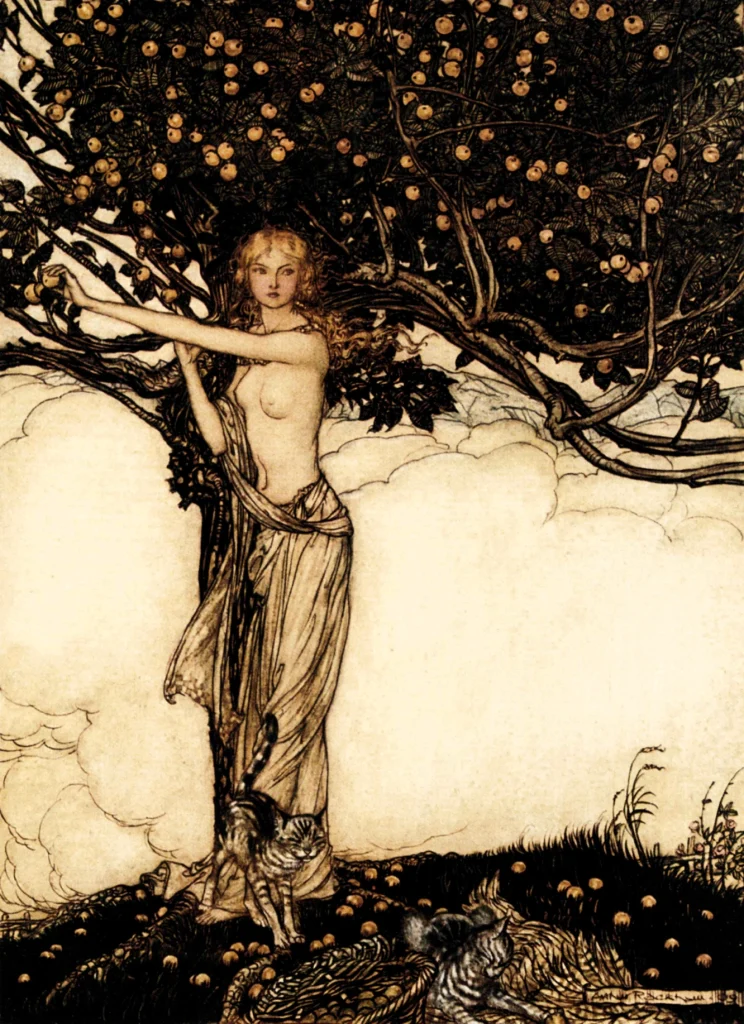

The Golden Apples, as symbols of Freya, embody the goddess’s power to grant eternal youth, her dominion over love and desire, and her association with abundance and wealth. These mythical fruits are a testament to her profound influence as a goddess of love, beauty, fertility, and magic. They symbolize the enduring allure of Freya’s character and her ability to inspire fascination and admiration within the world of Norse mythology, reminding us of the timeless qualities that connect us to the mysteries of life and love.
Freya Goddess Runes
In the realm of freya goddess symbols, Freya, is surrounded by a tapestry of symbols and enchanting mysteries. Among these symbols are runes, which play a significant role in Norse culture and magic. In this exploration, we will delve into the runes associated with Freya, unraveling their mystical significance and the connection they forge between the goddess and the ancient art of runic divination and magic.
Freya Goddess Runes
- Fehu (F): The Fehu rune is linked to wealth, abundance, and the nourishment of life. In the context of Freya and freya symbol, it resonates with her role as a fertility goddess, symbolizing the abundance of life and the vitality she bestows upon the world. Fehu embodies the idea that love and fertility are the true riches of life.
- Wunjo (W): Wunjo represents joy and pleasure, aligning perfectly with Freya’s association with love, sensuality, and the fulfillment of desires. This rune symbolizes the happiness and ecstasy that love brings, echoing the emotions Freya inspires.
- Berkana (B): Berkana is associated with growth and rebirth, reflecting Freya’s role in fertility and rejuvenation. It signifies the renewal of life and the cyclical nature of existence. As a goddess of love, Freya brings forth the renewal of love and passion in people’s lives.
- Ansuz (A): Ansuz is the rune of divine communication and inspiration. Freya’s expertise in seidr, a form of Norse magic involving divination and communication with the divine, aligns perfectly with the symbolism of this rune. It represents her ability to connect with higher realms and convey divine wisdom.
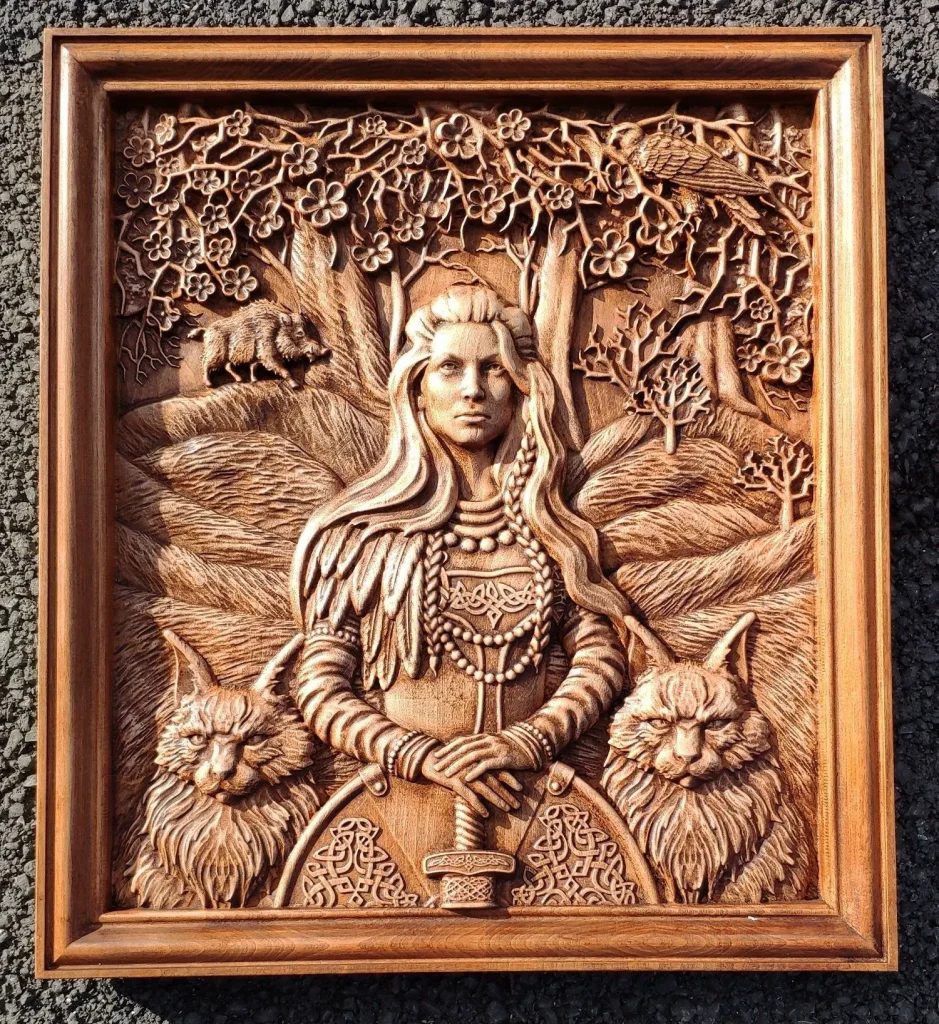

Freya goddess symbols, The runes associated with Freya hold profound meaning and significance within the realm of Norse mythology. They mirror her role as a goddess of love, beauty, fertility, and magic, encapsulating the essence of her character. Whether through the abundance of Fehu, the joy of Wunjo, the growth of Berkana, or the divine communication of Ansuz, these runes deepen our understanding of Freya’s mystical powers and her enduring influence in the world of Norse mythology. They remind us of the timeless connection between the divine, the natural world, and the magic that surrounds us.
Fire Element as a Symbol for Freya
The Fire Element, among the array of Freya goddess symbols, holds a prominent place. Freya, the Norse goddess of love, beauty, fertility, and magic, is a captivating figure within the realm of mythology. Her attributes and symbols reflect the essence of her character, and among them, the Fire Element shines brightly. In this exploration, we will delve into the symbolism of the Fire Element as a representation of Freya, uncovering its significance and its profound connection to her fiery spirit and passionate nature.
Fire Element as a Freya Goddess Symbol
- Passion and Desire: Fire is the elemental force of passion and desire, mirroring Freya’s intense and amorous nature. As a goddess of love, she embodies the flames of passion that ignite within the human heart, inspiring deep emotions, affection, and desire.
- Transformation and Renewal: Fire is a symbol of transformation and renewal, much like Freya’s role in rejuvenating love and life. Just as fire can consume and give birth to new beginnings, the goddess has the power to transform and revitalize relationships and emotions.
- Magic and Mysticism: Fire has long been associated with magic and mysticism. Freya’s proficiency in seidr, a form of Norse magic, aligns with the symbolism of fire’s transformative and mystical properties. She harnesses the power of fire to invoke change and divine insight.
- Protection and Warmth: Fire provides warmth and protection from the cold, much like Freya’s role as a guardian and protector. In Norse culture of freyja symbol, she was invoked to shield homes and families from harm, similar to how a comforting fire wards off the chill of the night.
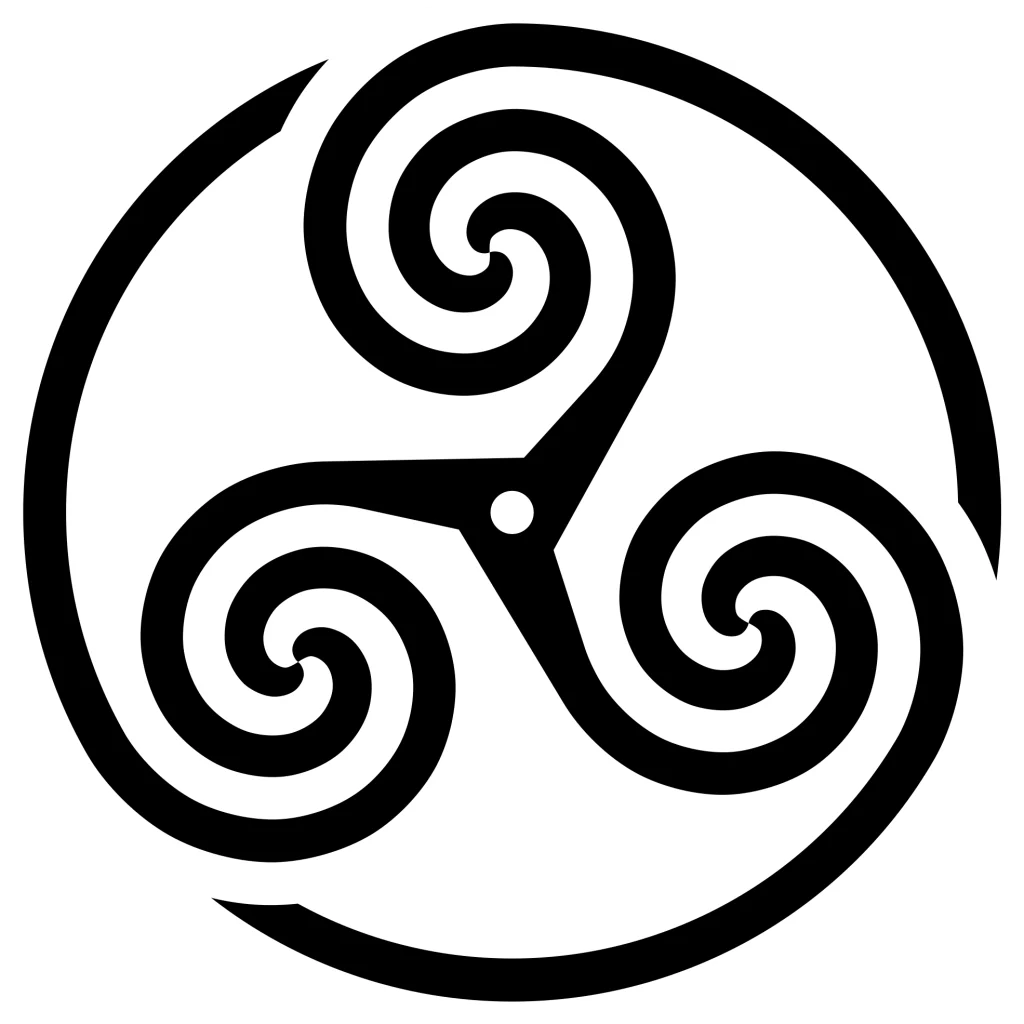

The Fire Element, as a symbol of Freya, embodies the goddess’s passionate nature, her role in transformation and renewal, her connection to magic and mysticism, and her protective and nurturing attributes. It serves as a testament to her enduring influence as a goddess of love, beauty, fertility, and magic. The fiery spirit of Freya continues to inspire fascination and admiration, reminding us of the profound connection between the elemental forces of nature and the mysteries of the human heart.
The Daisy Symbol For Freya
Freya, is a figure of captivating mystique and symbolism. Within her intricate tapestry of attributes and representations, the humble Daisy flower holds a special place. In this exploration, we will delve into the symbolism of the Daisy as a symbol of Freya, uncovering its significance and its profound connection to purity, innocence, and the essence of love in Norse mythology.
The Daisy Flower as a Freya Goddess Symbols
- Purity and Innocence: The Daisy is often associated with purity and innocence, aligning perfectly with Freya’s role as a goddess of love. It symbolizes the untainted and youthful aspects of love and beauty, reflecting the goddess’s ability to inspire pure and genuine emotions.
- Love and Fertility: Daisies are symbolic of love and the bonds between lovers. In Norse culture, they were used as tokens of affection and symbols of commitment. This association resonates with Freya’s domain as a fertility goddess, where love and procreation are closely intertwined.
- Rejuvenation and Fresh Beginnings: The Daisy’s resilience in growing in various environments represents rejuvenation and fresh beginnings. Freya, too, is linked to rejuvenation and the renewal of love and life. Just as the Daisy blooms anew with each season, the goddess rekindles the fires of passion and affection.
- Protection and Charm: In some traditions, Daisies were believed to offer protection from negative forces. Freya’s protective role as a guardian and her ability to charm and captivate hearts align with this aspect of Daisy symbolism.
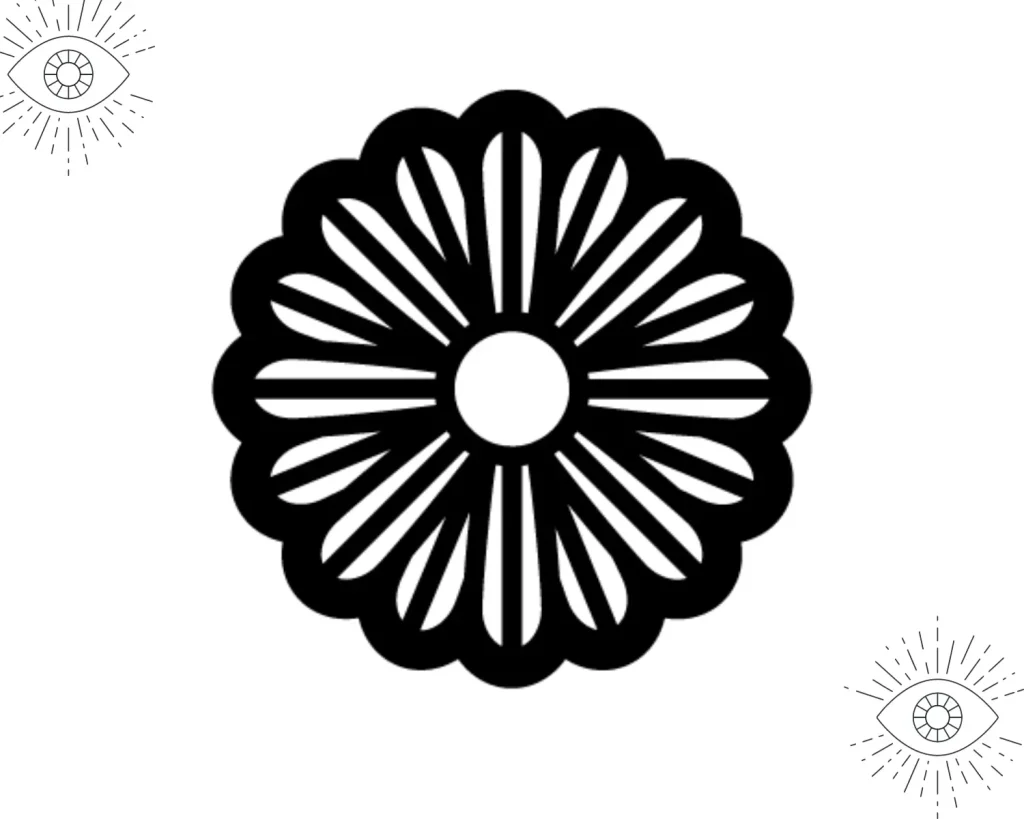

The Daisy flower, as a symbol of Freya, encapsulates the goddess’s connection to purity, innocence, love, and fertility. Its representation of rejuvenation and protection mirrors Freya’s role in renewing love and safeguarding her devotees. This humble yet profound symbol enriches our understanding of the goddess’s character, emphasizing her enduring influence as a deity of love, beauty, fertility, and magic. In the realm of Norse mythology, the Daisy continues to bloom as a testament to the timeless qualities of love and the goddess who embodies its essence.
What are Freya’s Colors?
Freya, is associated with several colors that reflect her multifaceted character and domains. The primary colors associated with Freya are:
- Gold: Gold is one of the most prominent colors associated with Freya. It symbolizes her connection to beauty, wealth, and the radiant power of the sun. Gold represents her role as a fertility goddess, where she brings forth the abundance of life and the vitality of love. It also underscores her opulent and regal nature as a deity of great prosperity.
- Red: Red is another significant color linked to Freya. It represents passion, love, and the fiery aspects of her personality. As a goddess of love and sensuality, red embodies the intense emotions and desires she inspires in both mortals and gods. It reflects her ability to kindle the flames of love in the human heart.
- White: White symbolizes purity and innocence in the context of Freya’s symbolism. It aligns with her role as a goddess of love and beauty, where she inspires pure and genuine emotions. White also underscores her connection to love’s untainted and youthful aspects.
- Green: Green can be associated with Freya’s role in fertility and the rejuvenation of life. It signifies growth, renewal, and the cyclical nature of existence, which she fosters through her domain as a goddess of love and fertility.
These colors collectively represent the various facets of Freya’s character and her influence in Norse mythology. They emphasize her opulence, passion, purity, and connection to the natural cycles of life, adding depth to her symbolism and significance as a prominent deity in the Norse pantheon.
What Animal is associated with Freya?
The animal most closely associated with Freya, is the cat. Freya is often depicted with a chariot drawn by two majestic cats, and these feline companions hold special significance in her mythology. Cats symbolize qualities such as independence, sensuality, and the enigmatic aspects of femininity, all of which resonate with Freya’s multifaceted nature. In Norse culture, cats were also believed to bring good fortune and were associated with domestic protection, aligning with Freya’s role as a guardian and protector of homes and households. The presence of cats in Freya’s symbolism reinforces her connection to these creatures and emphasizes their role as both companions and symbols of her power and influence.
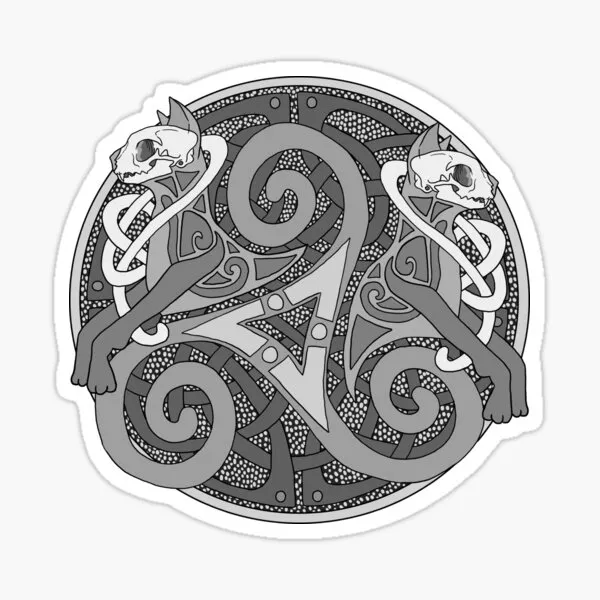

What Element is Freya?
In Norse mythology, Freya, or the freya goddess symbols,is often associated with the element of fire. Fire represents Freya’s passionate nature, her ability to kindle desire and love, and her connection to the transformative and mystical aspects of magic. Fire also symbolizes her role in renewal and rejuvenation, as well as her protective qualities, akin to a warm and comforting hearth that wards off the cold.
While Freya’s connection to fire is most prominent, it’s important to note that Norse mythology often embodies complex and multifaceted symbolism, and various interpretations and associations may exist within different sources and traditions.
What Magic does Freya use?
What magic Freya goddess symbols can use to show the powerfull of this god, is primarily associated with a form of magic known as “seidr” or “seid.” Seidr magic is a complex and mystical practice involving divination, shamanistic trance, and communication with the spiritual and supernatural realms. Freya is renowned for her expertise in seidr, making her one of the most skilled practitioners of this magical art in Norse mythology.
The magic of seidr involves several key aspects, including:
- Divination: Seidr practitioners, like Freya, have the ability to see glimpses of the past, present, and future. They can offer insights into destiny, provide guidance, and unravel mysteries through divination techniques.
- Communication with Spirits: Seidr involves communication with spirits, including the spirits of the deceased and other supernatural entities. Practitioners like Freya act as intermediaries between the mortal world and the spirit world, facilitating communication and seeking knowledge and wisdom.
- Transformation: Seidr allows for shape-shifting and transformation, enabling the practitioner to take on different forms or enter altered states of consciousness. This aspect of seidr is closely linked to Freya’s ability to move between realms and alter her appearance.
- Healing and Protection: Seidr can be used for healing purposes, as well as for protective magic. Freya’s role as a protector of homes and households is connected to her ability to use seidr for safeguarding her followers.
- Influence Over Emotions and Desires: Seidr can be employed to influence the emotions and desires of individuals. Freya’s association with love and desire is closely tied to her mastery of this aspect of magic.
Freya’s proficiency in seidr emphasizes her role as a powerful and enigmatic deity. freya goddess symbols uses this form of magic to navigate the complexities of human emotion, offer guidance, and interact with the divine and supernatural realms. Her expertise in seidr underscores her influence in matters related to love, beauty, fertility, and the mysteries of the universe, making her one of the most revered and captivating figures in Norse mythology.
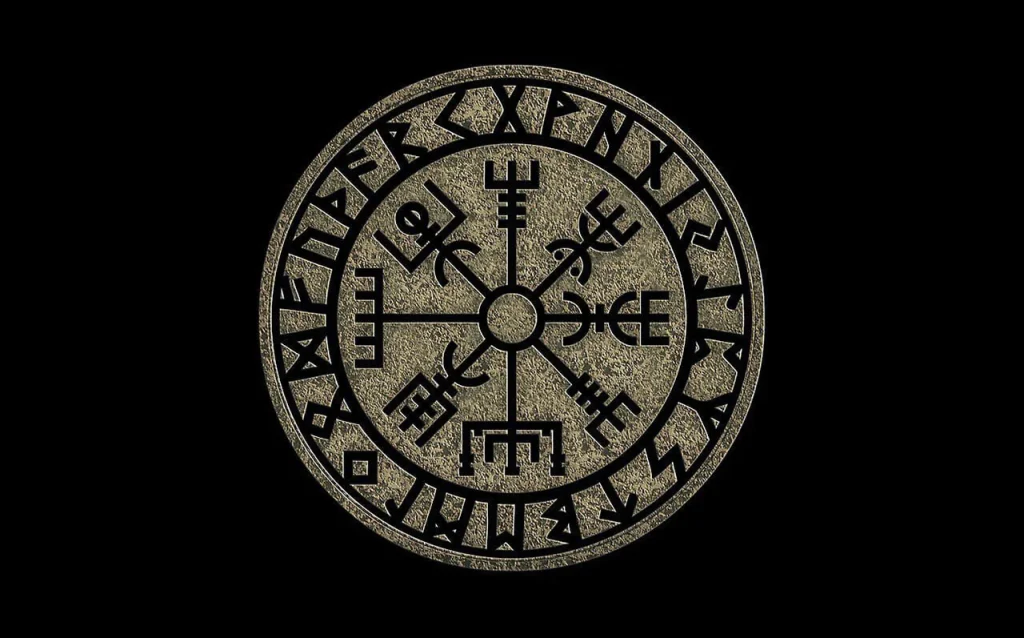

What Flower Symbolizes Freya?
The flower that symbolizes Freya, or the freya goddess symbols, is the daisy. The daisy holds special significance in relation to Freya’s symbolism and attributes. Here’s why the daisy is associated with Freya:
- Purity and Innocence: The daisy is often linked to purity and innocence, qualities that align with Freya’s role as a goddess of love and beauty. It symbolizes the untainted and youthful aspects of love and beauty, reflecting the goddess’s ability to inspire pure and genuine emotions.
- Love and Fertility: Daisies are symbolic of love and the bonds between lovers. In Norse culture, they were used as tokens of affection and symbols of commitment. This association resonates with Freya’s domain as a fertility goddess, where love and procreation are closely intertwined.
- Rejuvenation and Fresh Beginnings: The daisy’s resilience in growing in various environments represents rejuvenation and fresh beginnings. Freya, too, is linked to rejuvenation and the renewal of love and life. Just as the daisy blooms anew with each season, the goddess rekindles the fires of passion and affection.
- Protection and Charm: In some traditions, daisies were believed to offer protection from negative forces. Freya’s protective role as a guardian and her ability to charm and captivate hearts align with this aspect of daisy symbolism.
Overall, the daisy’s symbolism as a flower of purity, love, rejuvenation, and protection resonates deeply with Freya’s character and her role in Norse mythology. It serves as a meaningful and enduring freya goddess symbols and her influence in matters of love, beauty, fertility, and magic.
Freya Goddess Powers
Overall, freya goddess symbols of the daisy’s symbolism as a flower of purity, love, rejuvenation, and protection resonates deeply with Freya’s character and her role in Norse mythology. It serves as a meaningful and enduring symbol of the goddess and her influence in matters of love, beauty, fertility, and magic.
- Mastery of Seidr: Freya is renowned for her proficiency in seidr, a form of Norse magic characterized by divination, trance, and communication with the spiritual and supernatural realms. Her expertise in seidr allows her to access hidden knowledge, communicate with spirits, and shape the future.
- Control Over Love and Desire: As a goddess of love, Freya has the power to influence emotions, desires, and passions. She can kindle the flames of love, inspire deep affections, and foster romantic connections.
- Fertility and Abundance: Freya’s domain extends to fertility, and she has the ability to bless fields and crops to ensure bountiful harvests. She is also associated with the abundance of life, including healthy childbirth and the vitality of relationships.
- Warrior’s Valor: While primarily a goddess of love, Freya is not to be underestimated in battle. She possesses the power to transform into a warrior, displaying courage and strength on the battlefield when needed.
- Divine Protection: Freya is a guardian and protector of homes and households. Her presence is believed to shield her devotees from harm, making her a source of comfort and protection.
- Shape-Shifting: Freya has the ability to shape-shift and change her appearance, a power often associated with seidr and her connection to magic. This allows her to move between realms and adopt various forms.
- Magical Artifacts: She possesses powerful magical artifacts, such as the Brísingamen necklace, which enhances her beauty and allure, and the falcon-feathered cloak, which aids in her travels and magical endeavors.
- Queen of the Valkyries: Freya holds the esteemed position of queen of the Valkyries, granting her authority over these female warriors who select fallen heroes to join Odin in Valhalla.
- Connection to Animals: Freya’s association with cats and falcons is indicative of her power to connect with and command these animals, highlighting her affinity with the animal kingdom.
- Healing and Renewal: Freya possesses the ability to bring about healing and renewal, both in terms of physical health and emotional well-being. She can rejuvenate and revitalize, symbolizing the cyclical nature of existence.
Freya’s powers encompass a rich tapestry of abilities, reflecting her multifaceted nature as a goddess of love, and more. freya goddess symbols influence extends across various aspects of life, making her one of the most captivating and revered figures in Norse mythology.
Freya Goddess Facts
Certainly! Here are some fascinating facts about Freya and freya goddess symbols:
- Prominent Norse Deity: Freya is one of the most prominent and revered deities in Norse mythology, and she belongs to the Vanir tribe of gods, known for their fertility and agricultural associations.
- Twin Sister: Freya is the twin sister of Freyr, another important Norse deity associated with fertility, prosperity, and peace.
- Queen of the Valkyries: Freya holds the esteemed title of being the queen of the Valkyries, the female warriors who select fallen warriors to join Odin in Valhalla. This role highlights her connection to both love and war.
- Cat-Drawn Chariot: Freya is often depicted riding a chariot pulled by two powerful cats. These cats are symbolic of her independence and the enigmatic aspects of femininity.
- Mistress of Seidr: Freya is a master of seidr, a form of Norse magic involving divination, trance, and communication with the spiritual realm. Her skills in seidr make her a powerful and enigmatic figure in Norse mythology.
- Brísingamen Necklace: Her most prized possession is the Brísingamen necklace, a symbol of her beauty and sensuality. She acquired it through a clever deal with four dwarves.
- Symbol of Beauty and Desire: Freya’s associations with love, beauty, and desire are central to her character. She is often seen as an embodiment of sensuality and passion.
- Fertility Goddess: Freya is also revered as a fertility goddess, and her blessings are sought to ensure bountiful harvests, healthy childbirth, and the vitality of love and relationships.
- Connection to Gold: She has a strong connection to the color gold, symbolizing wealth, prosperity, and the radiant power of the sun.
- Multi-Faceted Deity: Freya’s domains encompass a wide range of aspects, including love, beauty, fertility, magic, war, and death. Her multifaceted nature underscores her complexity and significance in Norse mythology.
- Independent Spirit: Freya is known for her independent and assertive nature, often defying conventions and pursuing her desires with determination.
- Influence Beyond Norse Mythology: The character of Freya has influenced various aspects of modern culture, from literature and art to contemporary Pagan and Wiccan traditions, where she is revered as a goddess of love and magic.
These facts about freya goddess symbols provide a glimpse into the captivating and complex persona of Freya, a goddess whose influence extends across the realms of Norse mythology and beyond.
The freya goddess symbols associated with the Norse goddess Freya have a rich history rooted in Norse mythology and the broader cultural context of the Germanic peoples The history of Freya’s goddess symbols is intertwined with the narratives and beliefs of Norse mythology and the cultural values of the Germanic peoples. These symbols have evolved and gained deeper significance over time, shaping our understanding of Freya as a multifaceted deity associated with love, beauty, sensuality, and empowerment.

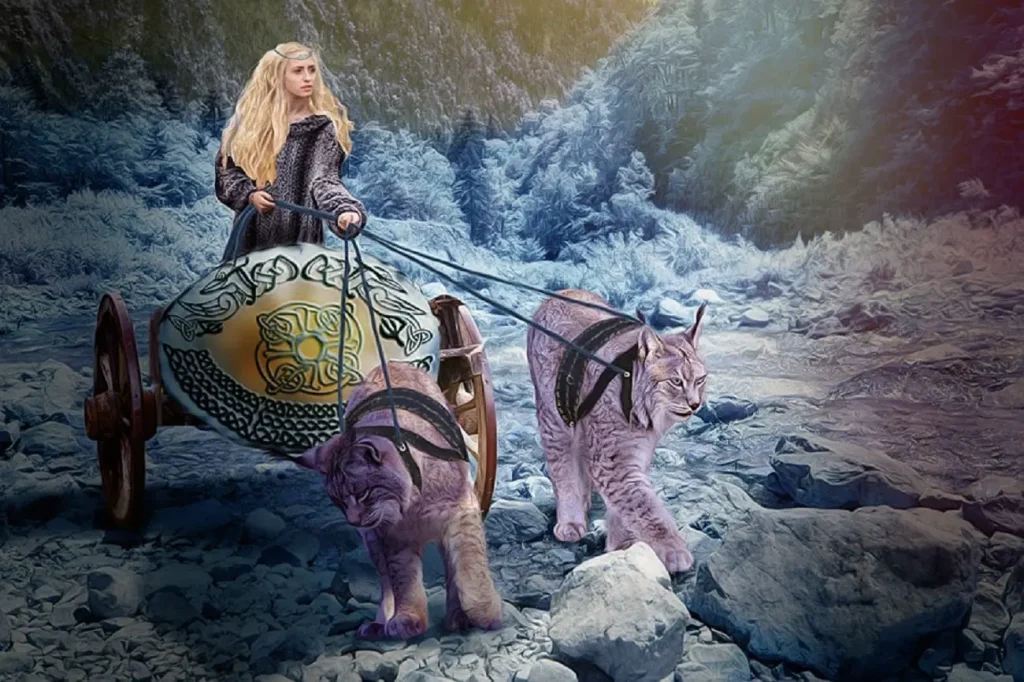
Говорите прямо.
Completely I share your opinion. In it something is also idea excellent, agree with you.
Freya Goddess